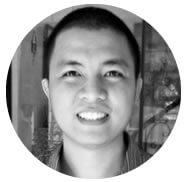We’ve all been there.
After weeks of developing and promoting your website’s content, you’re still staring at a bunch of disappointing sales reports.
Don’t blame yourself.
In the world of online businesses, a solid product isn’t enough to win customers anymore. You also need to cultivate your brand’s authority in order to cut through the competition and build buyer confidence.
The bad news is, authority can’t be earned overnight.
As a matter of fact, it may take months of rigorous content marketing and advertising to get the attention of your prospective customers.
Not a lot of small businesses can afford to wait that long.
If you’re a small brand in need of short-term gains, then influencer marketing just might work for you.
Table of Contents
What is Influencer Marketing?
As social media gets more ingrained in the lives of customers, the word “influencer” has become synonymous with individuals with an established following. However, online reach isn’t the only factor that makes influencers effective in marketing.
An influencer is also someone who can sway their audience when it comes to their purchase decisions.
For example, popular bloggers in your niche are seen as a credible information provider. If they feature your brand in a positive light, chances are their audience will consequently become more receptive of your products.
Now that you have a full understanding of what influencers are, let’s delve into the strategies that will help you find them.
1. Use Social Media Listening to Find Willing Influencers
If you’ve been around for a while, there’s a good probability that influencers have already talked about your brand.
These influencers should be your first targets.
Ideally, they tagged your brand’s official social media accounts when they posted about you or your product. This may come in the form of a review, a recommendation, or just a simple shout-out that led a few customers your way.
In which case, it should be easy to get in touch with these influencers since the social media network promptly notifies you whenever you are mentioned.
If not, then you may need to resort to a social media listening tool to find these mentions yourself.
TweetReach, for example, lets you track specific hashtags, accounts, and keywords mentioned on the entire Twittersphere. It allows you to take quick “Snapshots” that locate tweets that match your preferences — including the people who posted them.

Suppose you want to check for any mentions of The Logo Creative on Twitter. All you need to do is enter the company’s official handle — “@thelogocreative” — and wait for TweetReach to pull up the stats.
The first thing you will see is the account handle’s estimated reach along with the total impressions generated and a timeline of activities.

Remember, these numbers take into account all tweets that mention the brand, which is posted by a number of different users.
Aside from the list of tweets that mention the brand, you will also find a “Contributors” list that shows accounts with the most tweets.
The good news is, TweetReach already sorts the list based on the number of impressions they’ve generated. This makes it easier for you to spot potential influencers with a decent following on Twitter.

Congratulations — you now found the first batch of influencers you should contact.
Just remember that, as a small brand, some influencers may still be reluctant to work with you despite posting about you in the past.
This is especially true if you’re targeting professional bloggers and webmasters who care about the brands they promote to their audience.
What you need to do is to prove your worth through the content you already have on your website. This leads us to the next step.
2. Double Down on Your Content to Build Credibility
Put simply, it’ll be hard to convince influencers to talk about you if even they have little trust in your brand.
That’s why a content marketing strategy never stops. You should always be in full swing publishing valuable information to slowly and steadily build your authority.
It also helps to focus on creating share-worthy content to encourage influencers to promote your brand.
No — cookie-cutter, plain text posts won’t cut it. You need to get extra creative with your content ideas if you want your target influencers to lend a hand in spreading your brand’s message.
A repeatable tactic is to develop custom infographics that make data-rich information significantly more digestible.
With a tool like Canva, you can effortlessly manufacture infographics without spending money on a professional graphic designer. One of its key features is the sizable library of pre-made templates that get your design efforts off to a fast start.

Aside from infographics, Canva is also equipped to help you create blog banners, email headers, and social media images. The drag-and-drop interface makes sure the learning curve is virtually non-existent for these types of designs.

Why use visual content?
According to statistics, Facebook posts that contain images generate 230 percent more user engagement, be it via shares, likes, and comments. A similar effect can be observed on Twitter, where posts with images receive 150 percent more retweets than others.
The more engagement your posts get, the more likely it is to be seen by other influencers — further increasing its chances to be shared across social media communities.
3. Sweep Through Social Media Groups
As you keep your content strategy in high gear, it’s time to bolster your list of potential influencers.
For this step, you don’t have to fire up a specialized tool or perform a long list of steps. Simply head to a professional network like LinkedIn and start a people search with a seed keyword.

Of course, you can also perform a people search on networks like Facebook and Twitter. The only reason why you should start with LinkedIn is the marketing-savvy community.
Quora is another website you should check out when looking for influencers. Similar to LinkedIn users, these people are more likely to engage in digital marketing activities — thus, making them more lucrative prospects for influencer marketing.

4. Turn Existing Customers Into Brand Advocates
Sometimes, the only influencers you need are existing customers who’re already familiar with the quality and experience you can deliver.
Keep in mind that bloggers, journalists, and other traditional influencers aren’t the only ones with an online reach you can leverage. Your customers can also be your influential brand ambassadors if you know the right way to connect with them.
The Local Consumer Review Survey by BrightLocal reveals that 91 percent of consumers between ages 18 and 34 trusts online reviews as if they’re actual suggestions from peers.
This will not only help you close more sales but, it can also exponentially increase your social reach as your customers willingly promote your brand to their circles.
Wondering how to do this?
A straightforward strategy is to launch a social media contest that requires customers to share a post in exchange for a chance to win. Participants may also be asked to use a branded hashtag, which will make it easier for you to handpick the winners later.

It’s up to you to allow non-customers to join in or keep the event exclusive to paying customers. Although the latter choice fosters customer loyalty and may encourage users to make a purchase, letting everybody participate will maximize the marketing value of your contest.
Another way to leverage UGC is to automate product review requests to customers as soon as they complete a purchase. You can use an email marketing tool like MailChimp to construct your automation workflow within minutes.

5. Optimize Your Website for Maximum Conversions
Let’s get one thing straight — the traffic you gain through influencer marketing will go to waste if you don’t optimize your website for conversions.
Influencers may also be put off by your brand if your website provides them with a terrible experience. At any rate, you should at least see to it that the basics of UX design are implemented on your website.
Conversion-Optimized Landing Pages
First and foremost, landing pages are crucial components that walk prospective customers through the conversion process. It typically includes a headline, a wrap-up of the brand’s value propositions, and a call to action or CTA.
There are several tools out there that can help you create optimized landing pages using a front-end builder. But if you’re looking for a free option, you should check out the built-in landing page builder offered by MailChimp.

Fast Loading Speed
Numerous sources state that long loading times are among the worst conversion rate killers.
For one, a loading speed that’s over three seconds causes you to lose up to 40 percent of your web visitors. This means you’re missing out on roughly half of your prospective customers because you overlooked your website’s performance.
To improve your website’s loading speed, you can start with a performance optimization tool like PageSpeed Insights. It thoroughly investigates your site for any performance-related issue and provides the possible solutions you can utilize.

Another way to improve your website’s loading speed is to use a Content Delivery Network or CDN to optimize the bandwidth usage of your website. In simple terms, a CDN pertains to a collection of globally distributed proxy servers that significantly reduce latency for distant visitors — perfect if you’re running an international online store.
Conclusion
That’s it — a list of strategies that will help you find potential influencers in your niche.
Take note that the guide above doesn’t guarantee overnight success. Just be patient and remember that it’s only a matter of time before you find the perfect influencer who can promote your brand to social media audiences. Good luck!
 Author Bio
Author Bio
Jimmy Rodela is a freelance writer and marketing consultant. A contributor at SEMRush, SearchEnginePeople, and Yahoo. You can view some of my work at GuildofBloggers.com

